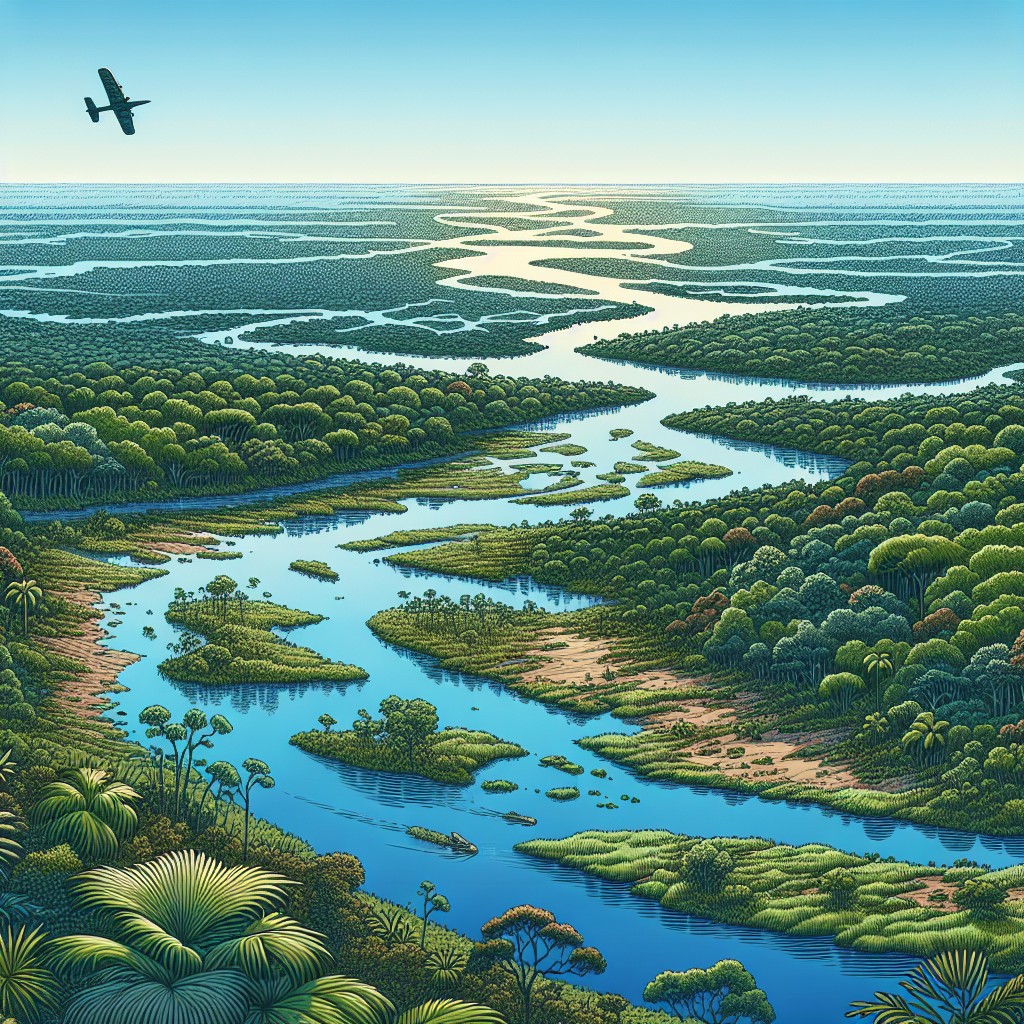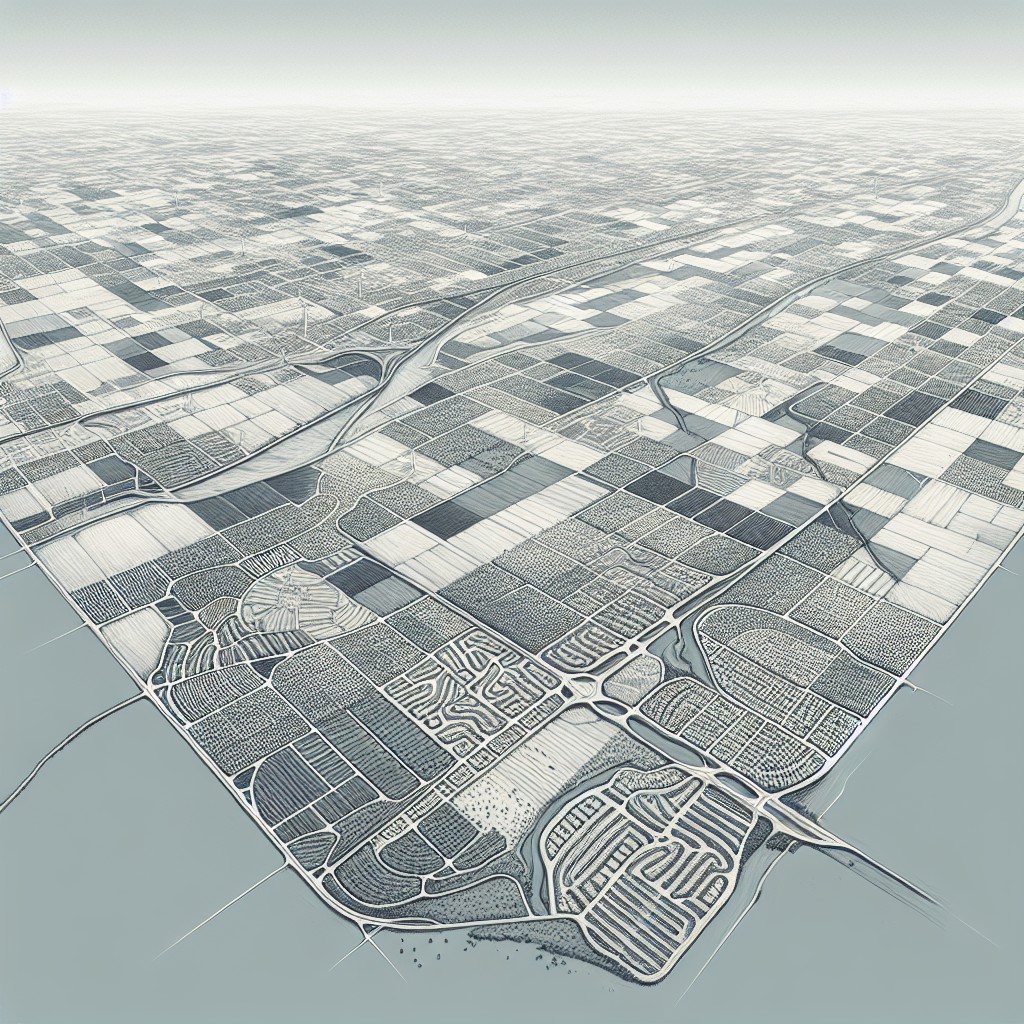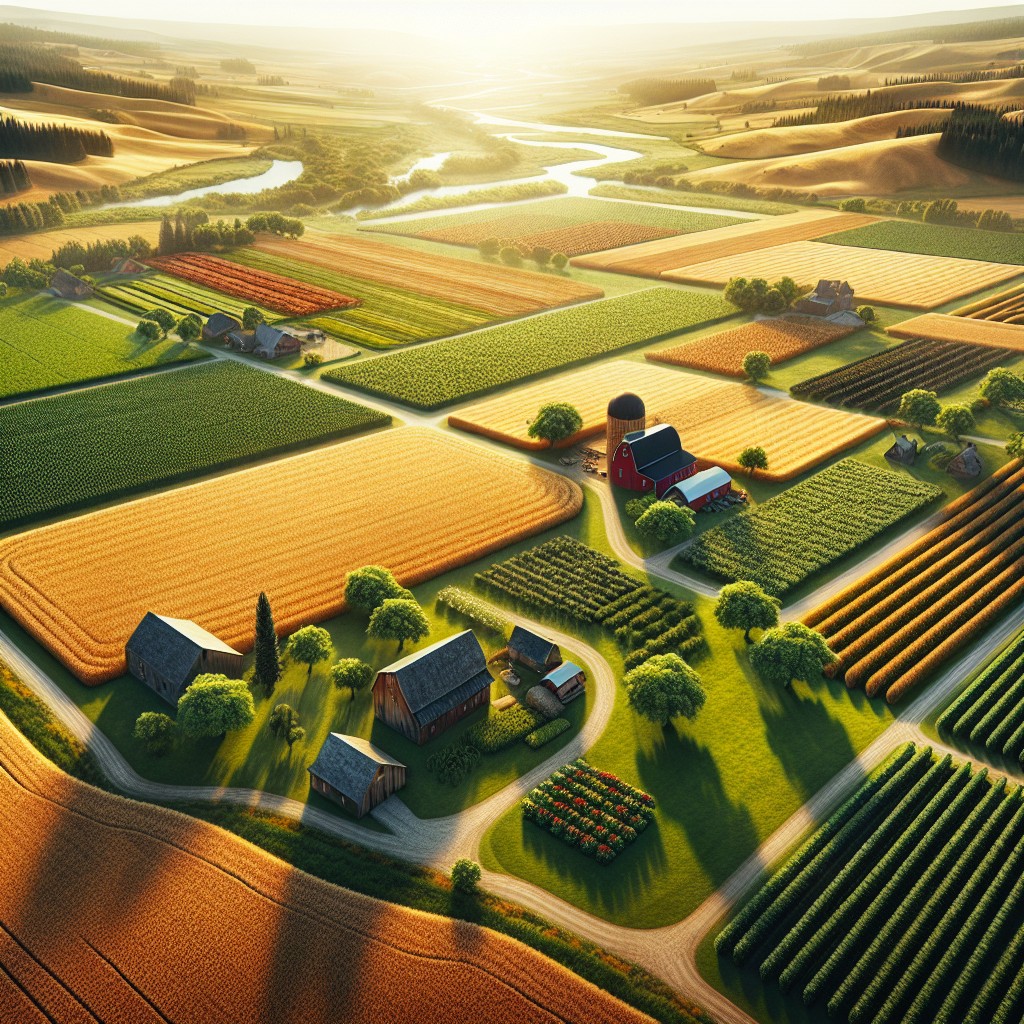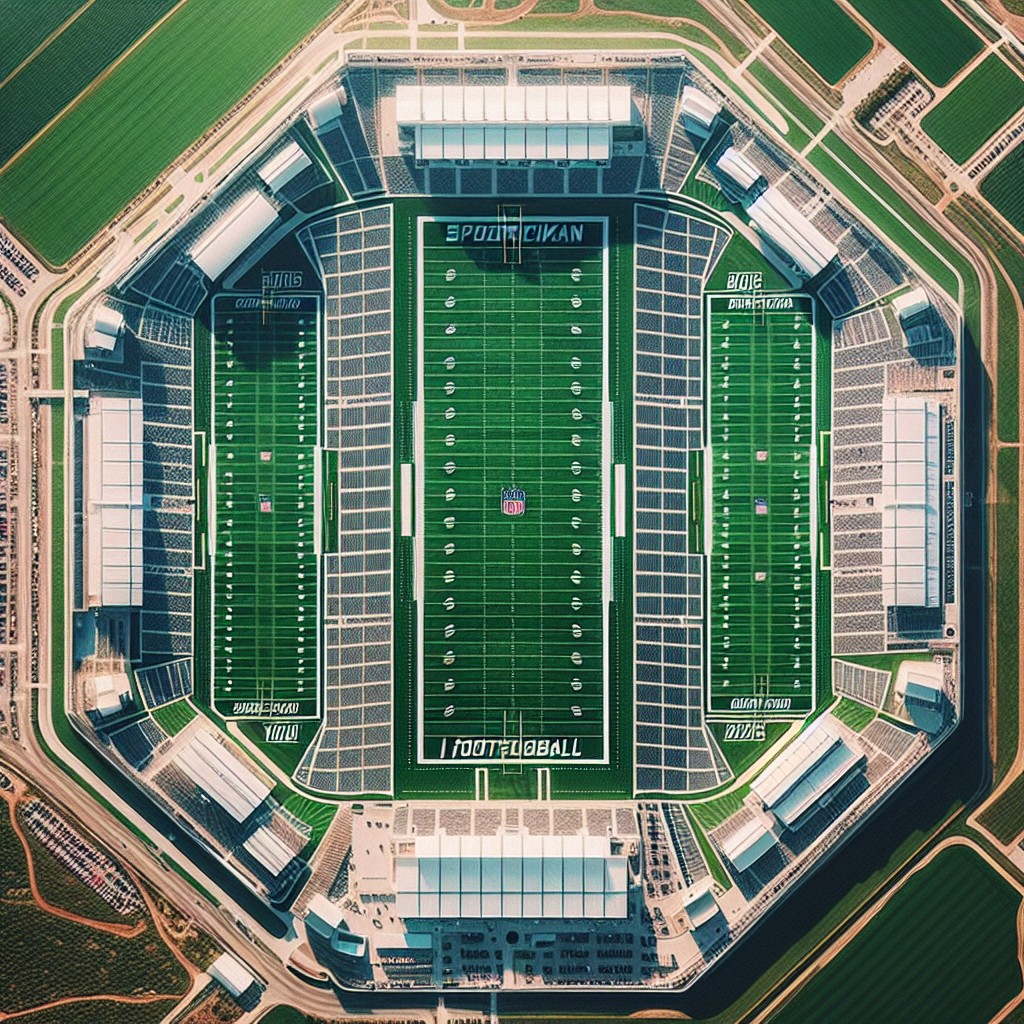Last updated on
Dive into this informative and comparative analysis as we unravel the vast scope of 300 acres, with tangible examples and insightful commentary that will give you a new perspective on this impressive measurement.
Key takeaways:
- 300 acres is roughly the size of 226 NFL football fields.
- It would take about 30 medium-sized city parks to make up 300 acres.
- 300 acres is equivalent to approximately 3.5 Disneyland theme parks.
- The Great Pyramid of Giza could fit about 25 times within 300 acres.
- With 300 acres, you could have multiple golf courses or a large-scale farming operation.
What's Inside
Visualizing 300 Acres of Land: 7 Illustrations

Picture a football field, including the end zones. Roughly 300 of these would cover the expanse of 300 acres. Visualize your local high school’s campus – many stretch to about 50 acres, hence, the size in question would encapsulate approximately six of these campuses.
Imagine driving past a swath of land that stretches for almost half a mile in one direction; that’s about the linear edge of a square 300-acre parcel. If you frequent a medium-sized city park, it might be close to 10 acres, so place 30 parks side by side for scale.
For the urban dwellers, think of city blocks which typically range from 2 to 5 acres in size, depending on the city – you’d need a grid of around 60 to 150 blocks. If shopping malls are more your scenery, the average mall is around 56 acres, so about five malls would showcase the magnitude of 300 acres.
Finally, visualize water. An acre can hold just over 36,000 cubic yards of water, so 300 acres could hypothetically contain nearly 11 million cubic yards – that’s akin to 4,500 Olympic swimming pools. Through these diverse illustrations, the vastness of 300 acres starts to become more palpable.
Standard Measurements of an Acre

An acre is a unit of area traditionally used in the United States and the UK. It is equivalent to 43,560 square feet, mapping out to about 4,840 square yards. To put that into perspective, an acre is about the size of a standard American football field without the end zones, as they measure roughly 57,600 square feet.
If you’re more comfortable with metric units, one acre converts to approximately 4,047 square meters. That’s almost the size of 16 tennis courts laid side by side.
When visualizing 300 acres, imagine 300 contiguous football fields or approximately 4,800 tennis courts grouped together. It’s a substantial amount of space, big enough to hold a small airport or a golf course, which on average spans 150 to 200 acres. Thus, 300 acres is large enough to accommodate one or two full-sized golf courses with room to spare.
Comparisons to Known Landmarks and Spaces
For a tangible grasp of 300 acres, consider the following:
- The National Mall in Washington, D.C., expansive and iconic, covers approximately 309 acres, including all its monuments and museums. Your 300 acres would be just shy of this entire public space.
If football is your passion, picture 226 NFL football fields, each playing field with end zones, side by side. That gives you a playing field of 300 acres.
For city dwellers, New York’s Central Park is a frame of reference. It’s around 843 acres. So, your area is roughly a third of that revered green space.
Disney aficionados can imagine Disneyland in California, which occupies about 85 acres. Your 300 acres would be equivalent to nearly three and a half Disneylands.
The Great Pyramid of Giza could comfortably fit on a 300-acre plot with plenty of room to spare. In fact, you could fit around 25 Great Pyramids in that area.
These comparisons serve as a scale to visualize the expansive nature of 300 acres, anchoring the concept to familiar spaces and landmarks.
Potential Uses for 300 Acres
Imagining what one could do with 300 acres conjures a vast array of possibilities. For context, this expanse could house multiple golf courses or serve as a private wildlife reserve.
Agriculture enthusiasts might see this as prime real estate to start a large-scale farming operation, capitalizing on the space for crops and livestock.
If fostering community is a focal point, developing a suburban neighborhood with parks, schools, and amenities fits well within this area.
Alternatively, the land could fulfil an academic or corporate purpose, hosting a university campus or a corporate retreat with ample recreational facilities.
Let’s not forget the potential for renewable energy projects; 300 acres is more than enough to install a solar farm or a small wind farm, harnessing the power of nature to generate electricity.
Such expansive plots are also ideal for large-scale conservation efforts aimed at preserving natural habitats or for setting up an outdoor education center dedicated to teaching sustainable living and environmental stewardship.
Environmental Impact and Land Management
Managing such a vast expanse demands thoughtful stewardship to preserve the health of ecosystems and ensure the sustainability of resources. Ecologically, this land could act as a critical habitat for wildlife, a carbon sink via forests, or a buffer against soil erosion if properly maintained.
Responsible land management practices could include:
- Reforestation and afforestation: Planting trees not only prevents erosion but also enhances air quality and provides a habitat for wildlife.
- Wetland restoration: Wetlands are important for water purification, flood control, and providing diverse biological habitats.
- Sustainable agriculture: Rotating crops, avoiding harmful pesticides, and integrating cover crops can enhance soil health and biodiversity.
- Renewable energy projects: Solar farms or wind turbines can harness natural energy without significantly disrupting the landscape.
- Wildlife corridors: Connecting separate natural areas allows for the safe movement of animals, promoting genetic diversity and robust ecosystems.
By recognizing the value and functionality of each acre, landowners can make choices that contribute positively to the global environment and to the conservation of natural resources for future generations.
Accessibility and Infrastructure Considerations
When considering a swath of land equal to 300 acres, it’s crucial to think about how one gets there and what facilities are available onsite. Improving accessibility requires establishing roads or trails, a potential cost not to be underestimated, especially in undeveloped or rural areas. The presence of waterways may call for bridges, while hilly terrain might need leveling or the creation of switchbacks.
Infrastructure expands beyond just roads. For example, if one envisions a residential development, water and sewage systems become a priority. In agricultural use, irrigation systems are vital. Meanwhile, commercial ventures may necessitate a different approach, requiring robust power supplies and broadband internet access.
With such a significant land area, the distance across the property can also impact the necessary infrastructure. A central hub might be essential for keeping distances to utilities manageable. Similarly, emergency services’ access is a critical consideration – longer distances can translate to longer response times in case of an emergency.
In sum, when it comes to 300 acres, planning for how you and others reach and utilize the land is as important as the land itself. Each choice directly impacts the potential and value of the property.
FAQ
How big is an acre visually?
An acre, visually represented, would be slightly smaller than an American football field.
How many football fields is 5 acres?
Five acres is approximately equivalent to four standard football fields.
How big is 30 acres on a map?
The scale of a map can significantly affect how large 30 acres appear; however, in reality, covering an area roughly equivalent to a square with each side just short of 1/4 mile in length translates to 30 acres. As a reference, consider a typical Olympic running track. If we ignore for a moment that it’s an oval and not a square, its length around is approximately 1/4 mile. Therefore, if you place four of these tracks in a square configuration, you’d roughly have 30 acres. It’s fascinating to visualize it this way and offers a tangible perspective on the size of 30 acres. Going deeper into the specifics, a quarter mile is 1,320 lineal feet. With 30 acres falling a bit short of 1/4 mile square, the sides would measure approximately 1,143.15 lineal feet each. To further illustrate, this is about the length of 13 football fields laid end-to-end or roughly the same distance as the height of the Empire State Building including its antenna! However, we should remember that these are only approximations. The shape of a 30-acre tract can vary and may not necessarily be a perfect square. It could be rectangular, triangular, or any other irregular shape, but the total area will always amount to 30 acres. One last point to consider: when you’re looking to understand acreage on a map, the scale of the map is crucial. After all, 30 acres could look significantly smaller or larger depending on whether you’re viewing a city map, a state map, a national map, or a world map. In conclusion, to grasp the size of 30 acres, imagine a square each side of which is just shy of 1/4 mile in length. It’s a sizeable area, akin to that of 22.5 football fields!
How many acres is 1 lot of land?
One acre of land typically contains about five average-sized home lots.
Can you equate 300 acres to a recognizable landmark or geographic feature?
For context, 300 acres is roughly equivalent to 228 football fields or about half the size of Central Park in New York City.
How many times would a standard running track fit into a 300-acre area?
A standard 400 meter running track would fit approximately 11,400 times into a 300-acre area.
What is the equivalency of 300 acres in terms of city blocks?
The equivalency of 300 acres is approximately 225 city blocks based on a standard city block size in the US measuring 1.32 acres.
Continue reading:



